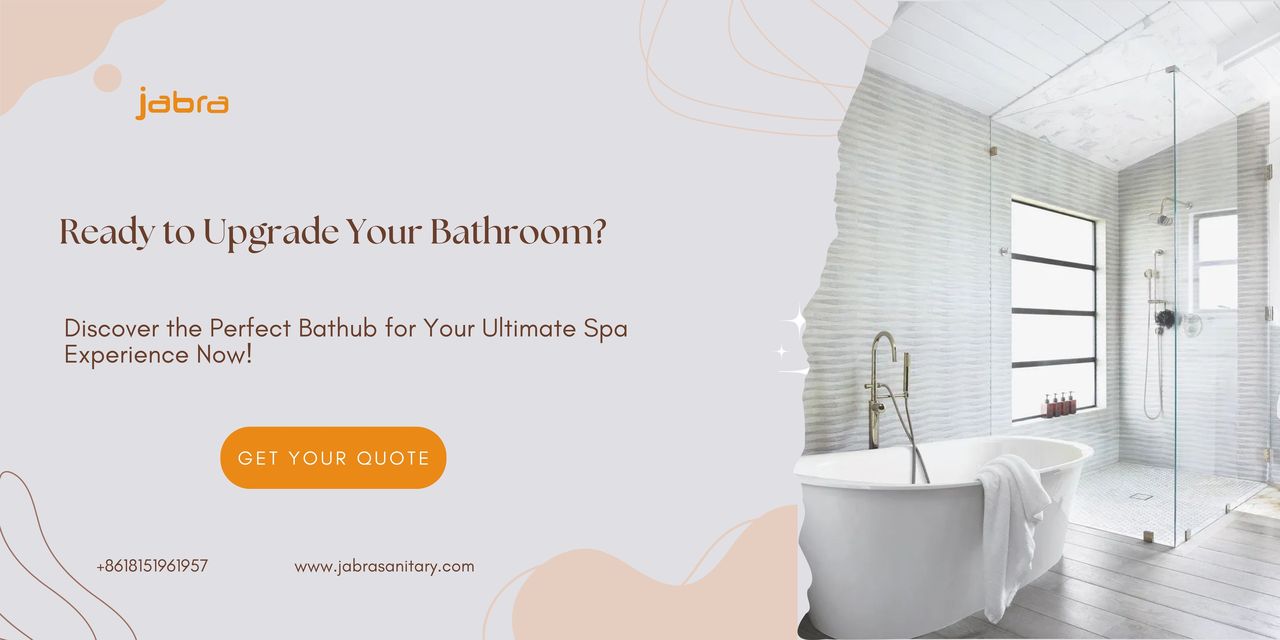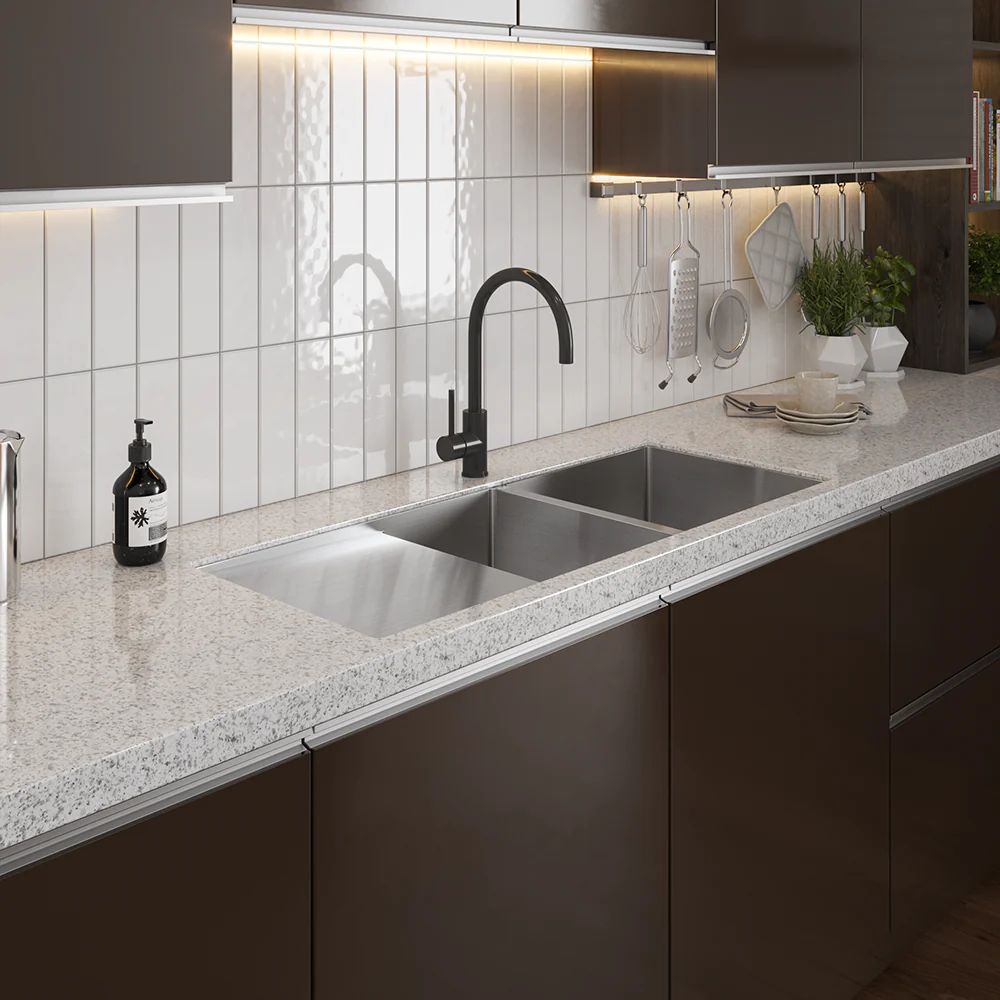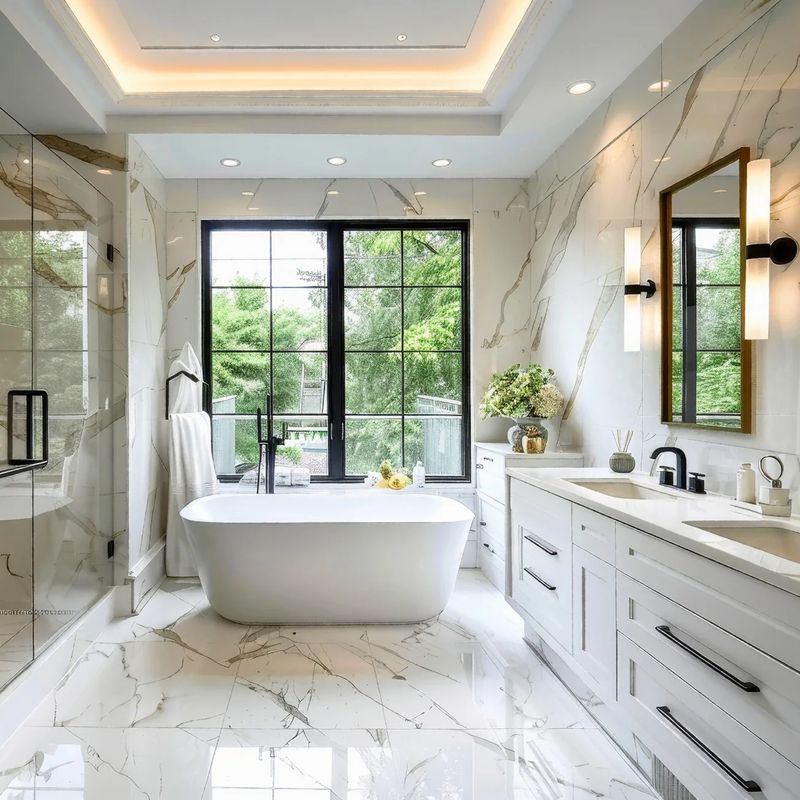 English
English
Jabra Sanitary is a sanitaryware supplier offering toilets, sinks, faucets, bathtubs, etc., at competitive prices. If you're a distributor, wholesaler, or project contractor, get a quote today!
 $23.9 Limited-time Offer
$23.9 Limited-time Offer Consignment Policy
Consignment Policy 20 Years of Experience
20 Years of Experience
In recent years, freestanding tubs have become a symbol of luxury and relaxation, turning regular bathrooms into beautiful and spa-like spaces. But with so many options available, how do you choose the best freestanding tub for your needs?
This ultimate guide will help you understand everything you need to know before buying a freestanding tub in 2025 from types and dimensions, pros and cons, to purchasing tips and costs.
Besides, choosing the right freestanding bathtub brand is also essential to guarantee quality and after-sales services. We will also recommend reliable brands for reference. Read on.
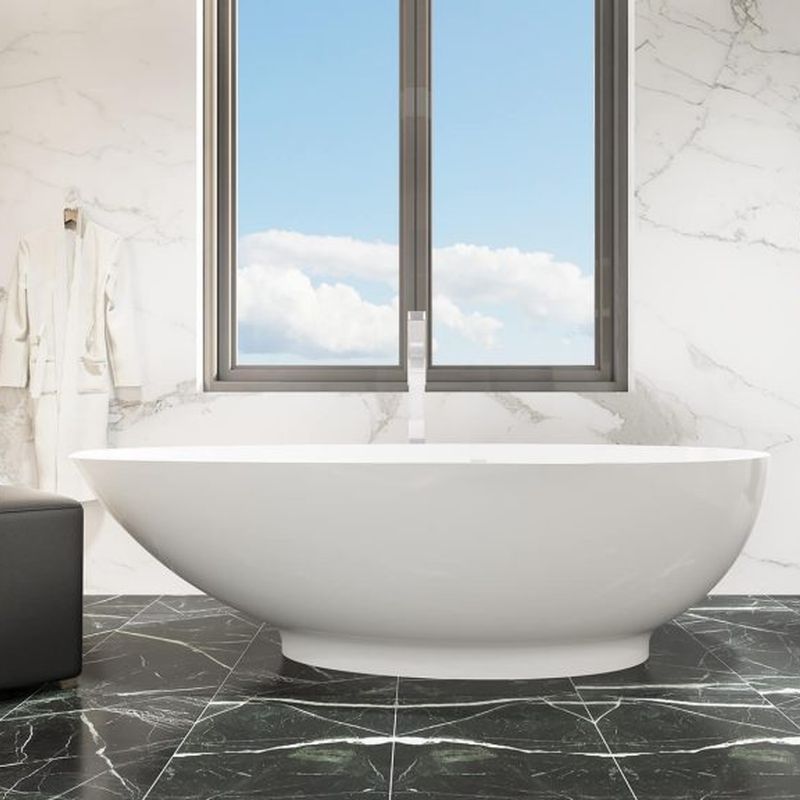
Table of Contents
What is a Freestanding Tub?
Types of Freestanding Tubs
Freestanding Bathtub Dimensions
Freestanding Tubs Pros and Cons
Factors To Consider Before Buying a Freestanding Tub
How Much Does a Freestanding Bathtub Cost
FAQs
Choose a Freestanding Bathtub for Your Next Project!
Conclusion
What is a Freestanding Tub?
A freestanding tub is a type of bathtub that stands independently, without the need for any surrounding walls or support. The absence of surrounding walls allows for more flexibility in bathroom layout and design.
They come in various shapes and sizes from sleek modern designs to classic clawfoot tubs. They offer versatility to match different bathroom aesthetics.
What sets freestanding tubs apart is their ability to create a luxurious and spa-like atmosphere. Whether you're looking to make a bold statement or simply enjoy a more comfortable soak, a freestanding tub is the perfect choice with various types.
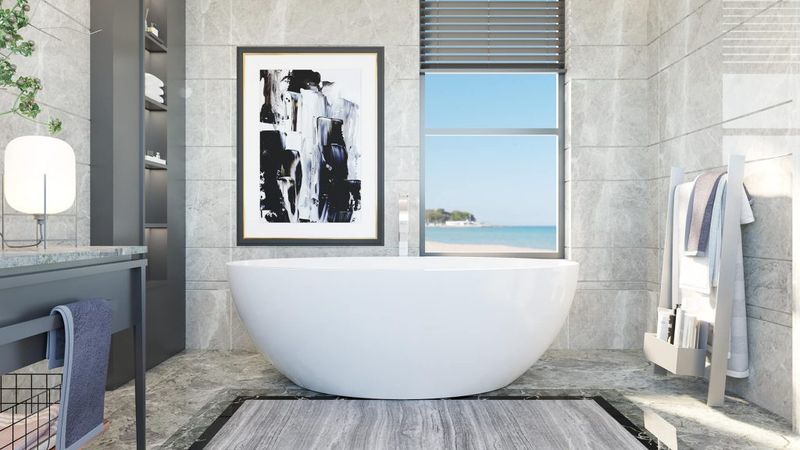
Types of Freestanding Tubs
When choosing a freestanding tub for your bathroom, understanding the different types and their sizes is critical to finding the perfect match for your space.
Here's an overview of the most popular types of freestanding tubs, the typical freestanding bathtub dimensions, and the advantages they offer:
1. Single Freestanding Tub
Size Range: 55–70 inches in length, 28–36 inches in width, 18–24 inches in height
This is the most common type of freestanding tub, designed for individual use. It's sleek and compact, making it ideal for smaller bathrooms. A single freestanding tub offers a clean and modern look with various sizes to fit different bathroom spaces.
2. Double-ended or 2 2-person Freestanding Tub
Size Range: 67–80 inches in length, 30–40 inches in width, 20–24 inches in height
This tub accommodates two people comfortably. Both ends are designed to be equally sloped, allowing you to recline at either end.
Perfect for couples or those who enjoy extra space while soaking.
3. Slipper Freestanding Bath
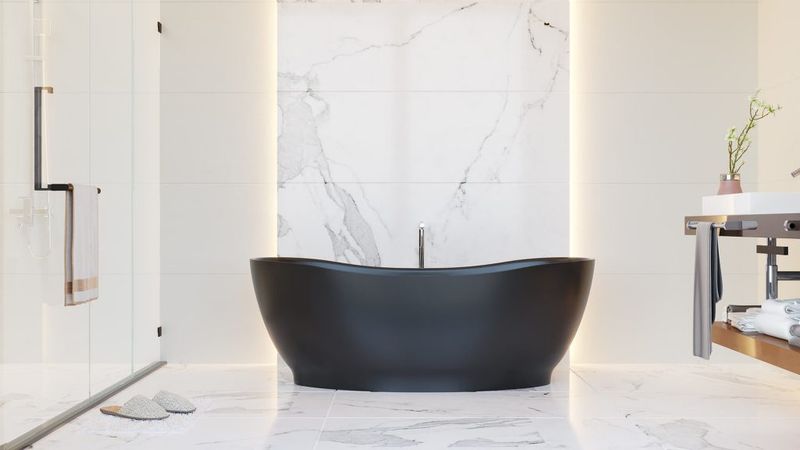
Size Range: 60–72 inches in length, 28–36 inches in width, 22–26 inches in height (with higher backrest)
The slipper tub features one end with a higher backrest, which provides extra support and comfort while reclining.
It's perfect for those who want a more traditional and elegant feel.
4. Pedestal Freestanding Tub
Size Range: 60–72 inches in length, 30–36 inches in width, 24–30 inches in height
Pedestal tubs are raised on a pedestal base, giving them an elegant and stately appearance. They often come in more classic and vintage styles, perfect for those who want a dramatic look in their bathroom.
5. Double Ended Freestanding Tub
Size Range: 65–80 inches in length, 30–40 inches in width, 22–26 inches in height
This tub allows two people to enjoy the tub with comfort. Both ends are finished, providing a symmetrical and balanced look.
It is ideal for modern or luxury bathrooms.
6. Clawfoot Freestanding Tub
Size Range: 60–72 inches in length, 28–36 inches in width, 24–30 inches in height
The clawfoot tub is a timeless classic, with four raised feet resembling claws. It's often associated with vintage or Victorian designs, adding a touch of nostalgia to any bathroom while still offering comfort.
7. Freestanding Tub with Shower
Size Range: 67–80 inches in length, 32–36 inches in width, 24–28 inches in height
Combining the luxury of a freestanding tub with the practicality of a shower, this design is ideal for space-limited bathrooms. It offers both functions in one compact solution.
8. Freestanding Corner Tub
Size Range: 55–70 inches in length, 55–70 inches in width (corner fit), 20–24 inches in height
Designed to fit into a corner, these tubs maximize space while offering the freestanding tub experience. They are ideal for smaller bathrooms or for those who want a cozy and enclosed bathing experience.
9. Freestanding Soaking Tub
Size Range: 60–72 inches in length, 30–36 inches in width, 24–28 inches in height (deeper tub)
Soaking tubs are deeper than typical tubs, allowing you to submerge your body completely. These tubs are designed for deep and relaxing soaks and are great for those who prioritize comfort and relaxation.
10. Freestanding Jetted Tub
Size Range: 60–80 inches in length, 30–40 inches in width, 22–28 inches in height
The jetted freestanding tub includes built-in jets that provide massaging water streams. It's perfect for relaxation, muscle relief, and therapeutic benefits.
Freestanding Bathtub Dimensions
When selecting a freestanding tub, understanding different freestanding tubs sizes is crucial to ensure a perfect fit for your bathroom.

Here's a breakdown of the most common freestanding bathtub dimensions:
Bathtub Type |
Typical Dimensions (Length x Width x Height) |
Description |
|---|---|---|
Small Freestanding Bathtub |
55–60 inches (Length) x 28–32 inches (Width) x 16–18 inches (Height) |
Perfect for compact bathrooms or smaller spaces. Ideal for individuals or couples seeking a cozy bathing experience. |
Average Freestanding Tub |
60–70 inches (Length) x 30–36 inches (Width) x 18–24 inches (Height) |
The most common size, balancing space and comfort for single users. Fit most modern bathroom designs. |
Large Freestanding Bathtub |
70–80 inches (Length) x 36–42 inches (Width) x 24–30 inches (Height) |
Ideal for spacious bathrooms, offering ample space for soaking and often accommodating two people. |
Single Freestanding Tub |
55–70 inches (Length) x 28–36 inches (Width) x 18–24 inches (Height) |
Sleek and compact, making it ideal for smaller bathrooms. |
Double-ended or 2-person Freestanding Tub |
65–80 inches (Length) x 30–40 inches (Width) x 22–26 inches (Height) |
Both ends are designed to be equally sloped, allowing you to recline at either end. Perfect for couples or those who enjoy extra space while soaking. |
Pedestal Freestanding Tub |
60–72 inches (Length) x 30–36 inches (Width) x 24–30 inches (Height) |
Pedestal tubs are raised on a pedestal base, giving them an elegant and stately appearance. |
Slipper Freestanding Tub |
28–36 inches (Width) |
Feature a raised end for extra comfort and support. Perfect for relaxing soaks. |
Corner Freestanding Tub |
36–48 inches (Width) |
Designed to fit in corners, maximizing space and providing a cozy bathing experience. |
Freestanding Tubs Pros and Cons
Freestanding tubs can transform your bathroom into a luxurious and relaxing space. But like all bathroom fixtures, they come with their advantages and disadvantages.
To help you make an informed decision, here are the key pros and cons of freestanding tubs:
1. Pros of Freestanding Tubs
Aesthetic Appeal
Freestanding tubs are a statement piece that enhances the visual appeal of any bathroom. Available in a variety of styles and designs, they can complement both modern and traditional bathroom décor.
Luxurious Experience
These tubs offer ample space for soaking and relaxation. Their deep basins provide a comforting experience, ideal for unwinding after a long day.
Versatility in Placement
Unlike built-in tubs, freestanding tubs are not confined to a single location. You can position them almost anywhere in the bathroom, whether in the center of the room or beside a window.
Easy Installation
Since they don't require being built into the wall, freestanding tubs are easier to install than traditional bathtubs. This can reduce labor costs and installation time.
Great for Renovations
If you're renovating your bathroom, a freestanding tub can be a great addition. It can be incorporated into a wide variety of bathroom layouts, even in smaller spaces.
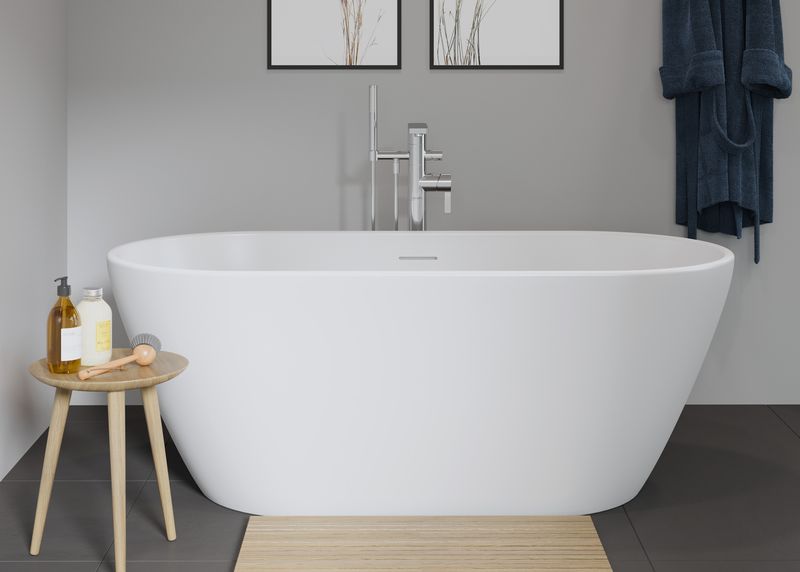
2. Cons of Freestanding Tubs
Space Requirements
One of the major downsides of freestanding tubs is that they require a larger bathroom space to truly shine. In smaller bathrooms, a freestanding tub might make the room feel cramped.
Higher Price
Freestanding tubs can be more expensive than standard built-in bathtubs. The cost of the tub itself, along with installation fees (especially if plumbing adjustments are needed), can add up quickly.
Water Retention
Due to their deeper basins, freestanding tubs may take longer to fill and retain heat less effectively than built-in tubs. This means you may need to refill the tub more often to maintain a comfortable temperature.
Cleaning Challenges
They can be harder to clean, especially around the base and under the tub, where dirt and debris tend to accumulate. Regular maintenance is essential to keep the tub spotless.
Limited Storage Space
Freestanding tubs do not offer any built-in storage or space for shower accessories. You'll need additional storage solutions like a shower caddy or wall-mounted shelves.
Factors To Consider Before Buying a Freestanding Tub
Before buying a freestanding tub, you should consider several important factors to make sure it fits your space, style, and budget.
Here are the key things to keep in mind:
1) Consider the Space Requirement
Make sure your bathroom is big enough for a freestanding tub. You need space for the tub and room to move around. Measure the available area carefully to decide whether a small or large tub will work best.
2) Select Style and Shape
Freestanding tubs come in many styles and shapes. You can choose from modern, classic, or traditional designs. Popular shapes include oval, rectangular, and round tubs.
Pick one that matches your bathroom's overall design.
3) Figure Out the Size
Freestanding tubs come in different sizes. Decide whether you want a small tub for personal use or a large one to share the tub. Size affects comfort, so choose carefully.
4) Choose Freestanding Tub Material
Freestanding tubs are made from different materials. Here are some options:
- Stone: Luxurious but heavy and expensive.
- Fiberglass: Affordable and light but less durable.
- Cast Iron: Strong, retains heat, but needs a strong floor.
- Resin: Modern look, smooth finish, and easy to clean.
- Copper: Expensive, but durable and naturally resists bacteria.
- Porcelain on Steel: Strong and easy to clean, but affordable.
5) Confirm Freestanding Tub Faucet
Choose a faucet that suits your tub style. <Read how to replace a bathtub faucet> Common types of bathtub faucets include:
Wall-Mount Faucets: Mounted on the wall for a sleek look.
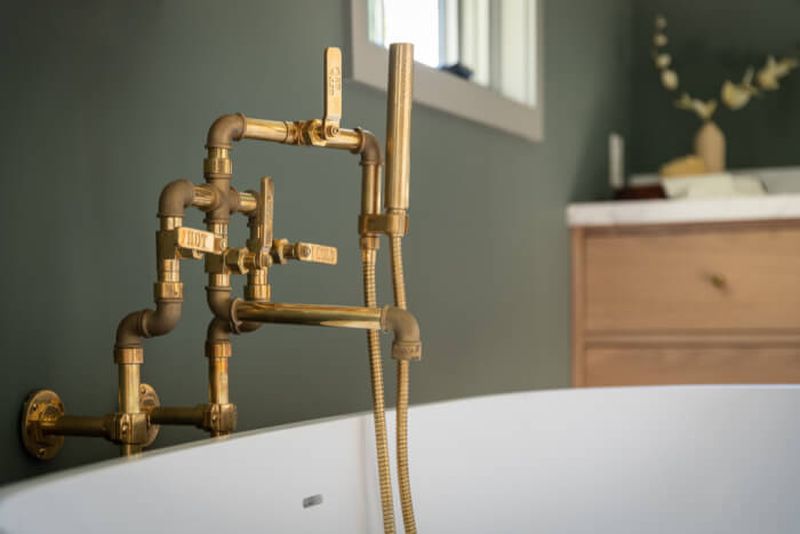
Roman Faucets: Attached to the edge of the tub for a traditional style.
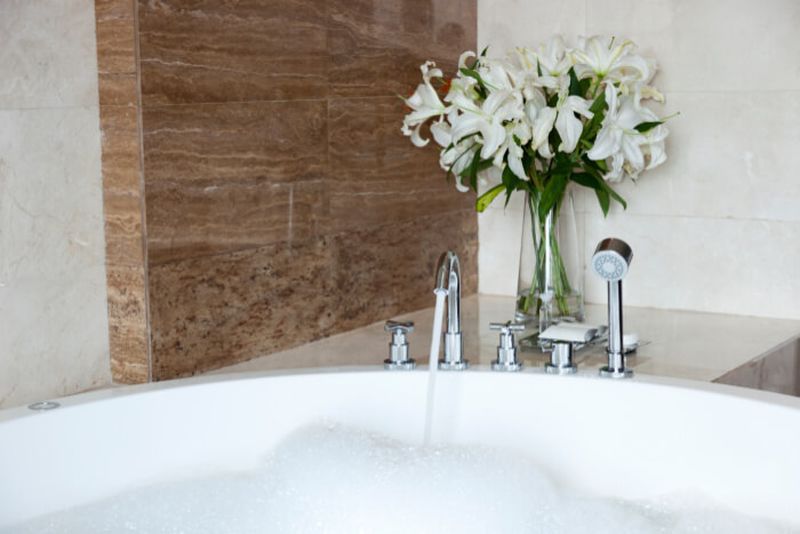
Or Deck-Mounted Faucets

Floor-Mounted Faucets: Stand next to the tub and add a luxurious touch.
6) Understand the Weight
Freestanding tubs can be heavy, especially those made from stone or cast iron. Check if your floor can support the weight. Otherwise, you may need to reinforce the floor.
7) Check Installation and Plumbing Restrictions
Make sure the plumbing in your bathroom works with the tub. In Australia, the household water pressure should sit at 500 but not exceed it.
Some things to check include:
- Water Pressure: Ensure your water pressure matches the faucet requirements.
- Plumbing Setup: Make sure the plumbing can handle the tub's faucet and water supply.
8) Set Your Budget
Plan your budget carefully. Consider both the cost of the tub and any installation costs. Installation may require extra plumbing or floor adjustments.
How Much Does a Freestanding Bathtub Cost
Freestanding bathtubs can range widely in price, depending on materials, design, size, and extra features.
On average, there are three levels of price ranges for reference:
- Budget Models: $500 - $1,500
- Mid-Range Models: $1,500 - $3,500
- Premium Models: $3,500 - $10,000+
Here are factors that affect the price:
(1) Material
- Acrylic: Affordable and durable. Prices range from $500 to $2,000.
- Cast Iron: Heavy and long-lasting. Prices range from $1,500 to $5,000.
- Stone Resin or Solid Surface: High-end feel. Prices range from $2,000 to $7,000.
- Copper: Attractive, heat-retaining, and expensive. Prices range from $3,000 to $10,000.
- Wood or Resin: Often custom-made. Prices range from $5,000 and up.
(2) Design & Style
Intricate designs or custom shapes cost more. Simple and modern styles are usually more affordable, while vintage or luxurious designs are pricier.
(3) Size
Larger tubs, especially those for two people, tend to be more expensive than smaller and standard-sized models (usually 60 inches).
(4) Brand
Well-known brands like Jabra Sanitary, Kohler, Toto, and Victoria + Albert are preferred for their reputation for quality.
(5) Extra Features
Bathtubs with features like jets, lighting, or Bluetooth speakers will be more expensive. These additions can increase the price by $500 to $3,000 or more.
(6) Installation Costs
Installing a freestanding tub typically costs between $1,000 and $3,000, depending on plumbing needs and how complicated the job is.
Other costs like shipping fees, accessories, and maintenance should also be considered. Freestanding tubs are large and heavy, so shipping can cost a lot.
You may need to buy additional items like a tub filler, drain, or towel bars. You need to clean and sometimes repair them. Materials like stone resin or copper may require specialized care.
FAQs
Are freestanding tubs comfortable?
Yes, freestanding tubs are generally very comfortable. Many models have ergonomic shapes and backrests that provide support. Deep designs allow for full immersion.
The comfort level also depends on the material. For example, acrylic tubs are known for being lighter and warmer to the touch, while stone resin models offer excellent heat retention.
Are freestanding tubs going out of style?
No, freestanding tubs remain a popular choice. Their timeless appeal and ability to create a luxurious focal point in any bathroom make them a lasting trend.
Modern freestanding tubs come in a variety of designs, from minimalist to vintage-inspired.
Can I install a bathtub in a small bathroom?
Yes, you can install a freestanding tub in a small bathroom. There are compact models designed specifically for smaller spaces.
Look for tubs that are between 55 to 60 inches in length to ensure a comfortable fit.
How much space should I leave around a freestanding tub?
It's recommended to leave at least 3 to 6 inches of space around the tub for cleaning and maintenance. This space also allows for proper ventilation and accessibility.
Are freestanding baths hard to clean around?
Freestanding tubs are generally easier to clean than traditional built-in tubs because they have no surrounding edges or panels.
However, you will need to clean around the base and underneath the tub regularly to prevent dirt buildup.
Choose a Freestanding Bathtub for Your Next Project!
When choosing a freestanding bathtub for your next bathroom project, there are essential steps to follow to ensure you make the best decision.
1) Check Freestanding Bathtub Guides
Start by reviewing detailed bathtub buying guides. These guides provide valuable information on the different types of freestanding tubs, materials, sizes, and installation options.
Be sure to explore trusted resources like bathroom magazines, online reviews, and expert recommendations.
2) Choose the Best Freestanding Bathtub Brands
The quality of your freestanding bathtub depends largely on the brand you choose. Look for well-known brands with a reputation for high-quality materials, craftsmanship, and customer service.
Top brands like Jabra Sanitary, Kohler, Toto, and Victoria + Albert are known for their durable and aesthetically pleasing products. These brands offer a wide range of designs from classic to modern.
You can find a tub that fits your bathroom's style and your personal preferences.
Are you ready to elevate your bathroom to a whole new level of luxury? Discover the perfect freestanding bathtub for your home with our comprehensive guide!
Whether you're looking for a sleek, space-saving design or a spacious tub for ultimate relaxation, we have options for every style and space.
Why Choose Jabra Sanitary?
If you're looking for a brand that blends diverse styles, excellent comfort, and outstanding customer support, Jabra Sanitary is a top contender. Below is a detailed explanation:
Diverse Styles and Sizes: Jabra Sanitary offers a wide variety of freestanding bathtubs, from minimalist modern designs to more traditional or vintage-inspired options. No matter the space or aesthetic, Jabra has something to suit every bathroom style.
Convenient Features for Ultimate Comfort: Jabra tubs are designed with comfort in mind, featuring ergonomic shapes, deep soaking options, and heat-retaining materials. Its design ideas ensure a relaxing and luxurious bath experience.
Outstanding Customer Support and Warranty: With Jabra Sanitary, you're not just purchasing a bathtub—you're investing in long-term satisfaction. It offers excellent customer support and solid warranties, giving you peace of mind with every purchase.
Conclusion
Choosing the right freestanding bathtub is an exciting part of any bathroom renovation. By considering key factors like size, design, pros and cons, materials, and budget, you can find a tub that not only enhances the look of your bathroom but also provides the ultimate comfort.
Be sure to research reputable brands, review customer feedback, and explore all your options before making a purchase.
Get Your Custom Quote Today!
Don't wait – get your personalized quote now and find the perfect freestanding bathtub that fits your style and budget. Let us help you make your dream bathroom a reality!
If you still have questions about buying a freestanding bathtub, please contact Jabra Sanitary!







